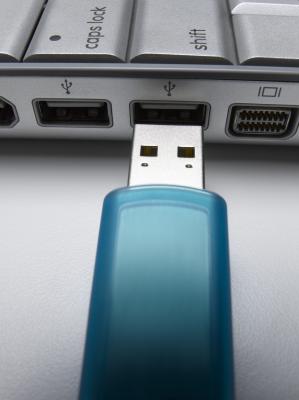Dec 16, 2020 • Filed to: Solve Mac Problems • Proven solutions
For many years, users of Macs have been looking for the best tutorial to make sure that the use of USB drives on a Mac is not only explored, but it is also done well, and that the best. To help users make the best use of the system tools, this article has met the demands and needs of Mac users and increase general awareness.
Numerous advanced tips can be used to make sure that the user gets the best results when it comes to USB usage on a Mac. This tutorial will discuss the top 7 tips for using a flash drive. It will also provide a basic level of training to make the overall use of flash drive easier for Mac users.
1 Connecting Flash Drive to MAC
This is the first step that a user will take. Connecting USB to Mac is a simple process. Connecting to the Mac leads to the recognition of the device which can then be used for file transfer and sharing. USB ports are on all Macs and the user should connect the USB flash drive as seen in the picture below:
Select “Mac OS Extended (Journaled),” or your preferred format type. The former option can help ensure that the USB drive is made fully compatible with your Mac, since most USB drives are preformatted for Windows computers by default. Not only can you make SanDisk USB flash drive bootable, but also you can make any brand of USB drive bootable as long as it is big enough to hold your setup files. It has a user-friendly interface and the Windows To Go Creator feature will make that complex process simply finished in several clicks. All of them also can help you format USB flash drive, memory card, local hard drive on Mac. It is strongly recommended you to use Super Eraser to format the SanDisk portable SSD before you sell, donate or dispose old SanDisk portable SSD. Connect the iXpand flash drive to PC and launch EaseUS partition tool, right-click the flash drive. Keep your favorite photos, videos and other files safe with this SanDisk Cruzer Glide flash drive that features SanDisk SecureAccess password protection for optimal security. A high-speed USB 2.0 interface delivers fast, reliable performance.
2 Formatting Flash Drive on Mac
This process is as follows:

a. Press CMD + Spacebar keys, then type application to access the application folder. Select Disk Utility.
b. Select the USB drive that is to be formatted from the left panel. Press the Erase button.
c. Press the Erase button again to confirm the process has been finished.
3 Scanning for Virus on USB Flash Drive on Mac

This is also one of the functions that should be carried out to ensure that the system is never affected and the USB drive's data is also protected properly. The USB device should be right-clicked once the ClamXav has been installed, which is the best antivirus software program. Please select the scan option to complete the process.
4 Opening Flash Drive on Mac
This is also one of the simplest processes that can be carried out. It should be noted that a user should first scan the drive for viruses so that the malware and viruses never affect the system. The finder that is built on Mac can open USB drives. The left panel shows all the connected drives and once the desired one has been clicked, the contents are shown in the right panel.
5 Transferring File from MAC to Flash Drive
Users can use flash drive on Mac in a simple way. Please scan the files that are being transferred to avoid virus attacks. The flash drive appears on the desktop of the Mac as soon as connected and the files can be dragged to finish the process.
6 Making Backup of Your Flash Drive on Mac
Users can right-click the flash drive and select the duplicate option to backup data on Mac easily.
7 Recovering Files from Flash Drive on Mac
By using the Recoverit for Mac, the process is also very easy as below:
Recoverit for Mac can help you perform 'All-Around Recovery' once you launch Recoverit. Follow the next simple steps to perform flash drive data recovery on Mac.
Step 1: Select your flash drive on the section 'External removable device' to start scanning your data.
Step 2: A scanning process will run immediately. You can preview the files to make sure the files that you need are found.
Step 3. Select the required files and click the Recover button to finish the process.
What's Wrong with Mac

- Recover Your Mac
- Fix Your Mac
- Delete Your Mac
- Learn Mac Hacks
How do I format my 64GB(or larger capacity) SanDisk USB flash drive with the FAT32 file system in Windows?
NOTE: Formatting deletes all data on your SanDisk USB flash drive. Please be sure to back up all data on your SanDisk product prior to formatting.
Disclaimer Notice: Use of Third-Party Software or Web Sites
There are various free third-party Windows applications that can be used to format SanDisk USB flash drives in the FAT32 file system for use in devices that do not support the exFAT file system. We recommend the following applications available for download at Softpedia:
NOTE: Please make sure to close all open instances of Windows File Explorer prior to formatting your SanDisk product with these applications. Not doing so may result in the an error when attempting to begin the format process.
Related answers
Format Sandisk Flash Drive For Mac Download
PrintFormat Usb Flash Drive Windows
Product Compatibility
View all popular answers
RMA process information
Login to 'My SanDisk'
Format Sandisk Flash Drive For Mac Os

Format Sandisk Flash Drive For Mac Osx
Store
About Us
Contact
- Monday – Friday, 9am - 5:30pm GMT
- 08000488059